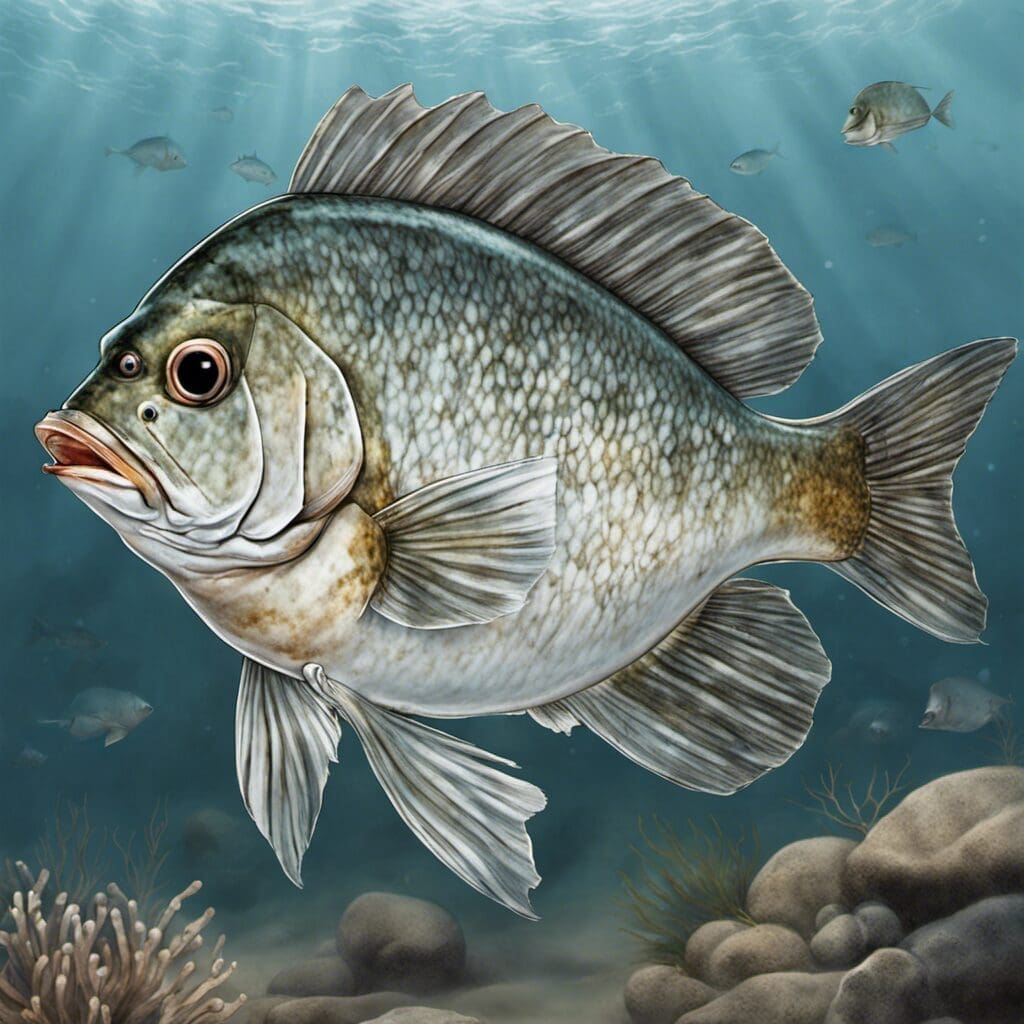Introduction
Morwong, also known as ‘Morwongs,’ ‘Jackass Fish,’ ‘Rubberlip Morwong,’ etc., belongs to the family Cheilodactylidae and Latridae. This variety of fish predominantly resides in the Southern Ocean, where the sea teems with such species. Morwongs have been prevalent for both commercial and recreational fishing due to their size and taste factor.
Conservation Status
The majority of Morwong species are currently classified as “Least Concern” on the conservation status scale. This means that there are conservation efforts, notably by regulatory organisations for fisheries management and environmental agencies globally. These aim at controlling overfishing and habitat destruction, which have contributed to balancing their population.
Statistics
| Statistic | Average | Range |
|---|---|---|
| Length | 50 cm | 20 – 120 cm |
| Weight | 1.8 kg | 1 – 5 kg |
| Average Lifespan | 25 years | 15 – 35 years |
The average Morwong has a lifespan of about 25 years, with most species reaching maturity at approximately 5 years old.
Distribution
Morwongs are endemic to the Southern Hemisphere waters around South Africa, Australia, New Zealand, and Chile. They are more common in cold-temperate waters. Morwongs are typically sedentary species, showing limited migration patterns.
Habitats
Morwongs prefer rocky reefs in temperate waters with a depth range from shallow waters down to around 50 meters, although some species can be found at greater depths. In terms of temperature, they prefer colder temperatures between 10-20°C.
When and Where to See
The best time to see Morwongs tends to be during the warmer months when they tend to feed more and become more active. Early morning and late afternoon are reportedly the preferable viewing times.
Best Fishing Locations
Morwongs can be found in numerous locations, some of the top include:
1. Sydney Harbour, Australia
2. Western Port Bay, Australia
3. Tasmania, Australia
4. Stewart Island, New Zealand
5. Kaikoura, New Zealand
6. Chiloé Island, Chile
When fishing for Morwong, look for the rocky reef areas where they generally inhabit, using fish finders or local knowledge to locate potential hotspots.
How to Catch
Morwongs are generally caught using baited lines or nets. Preferred bait or lures include squid, pilchards, and prawns. The best time of day for fishing are dawn and dusk.
Identification Guide
Morwongs have a round, elongated body with a large head and eyes. Their colors range from silvery white to blue-grey or brown, often with black markings. Morwongs are unique in their lipstick-like lips, which distinguish them from similar species.
Culinary
Morwongs are valued for their mild, sweet flavour, low oil content, and a firm, flaky texture. They can be baked, grilled or BBQ’d, but care should be taken not to overcook them.
Additional Information
Morwongs mainly feed on a variety of benthic invertebrates, including crustaceans and molluscs. Predators of Morwongs include larger fish species, seals, and birds. They are also targeted by commercial, recreational, and indigenous fisheries.
References and Further Reading
For additional information on Morwong, considered resources are the “Australian Marine Life” by Graham Edgar, “The Field Guide to New Zealand Fishes” by Tony Ayling & Geoff Cox, as well as multiple online resources, including scientific journals and fisheries management websites

